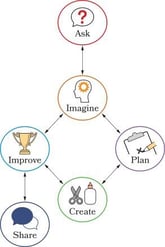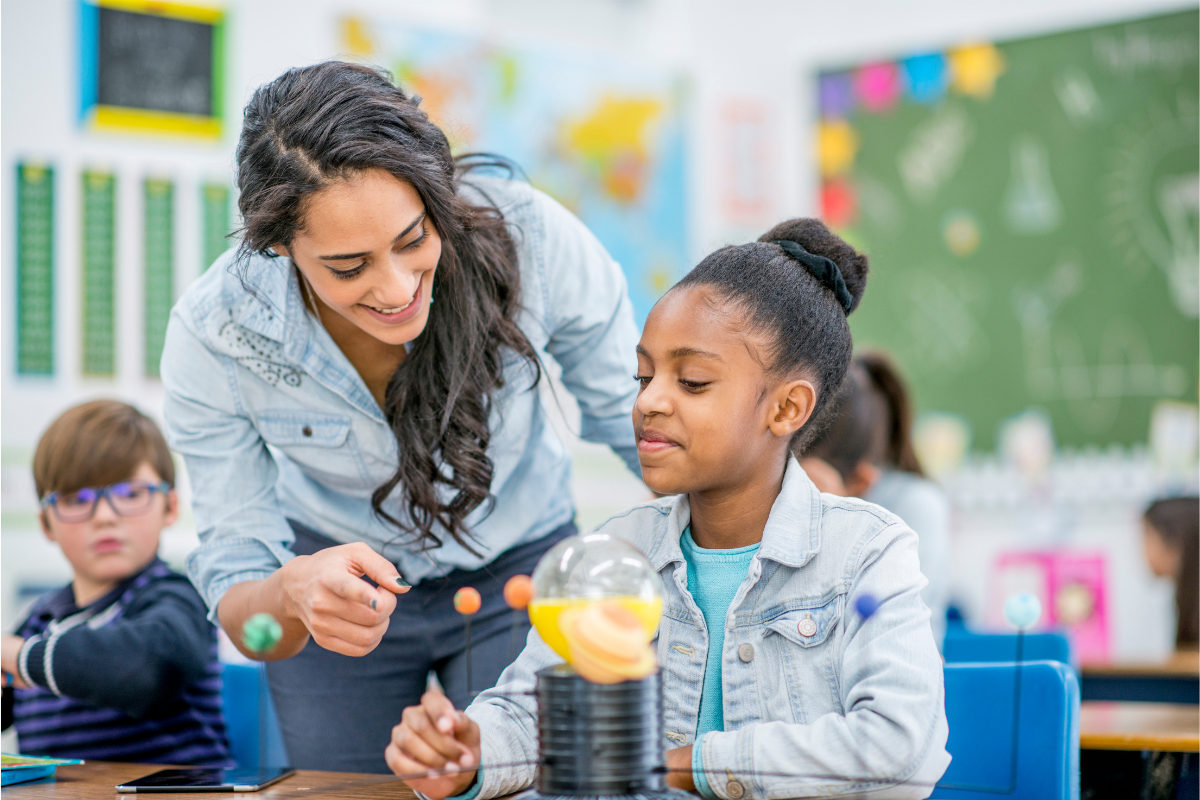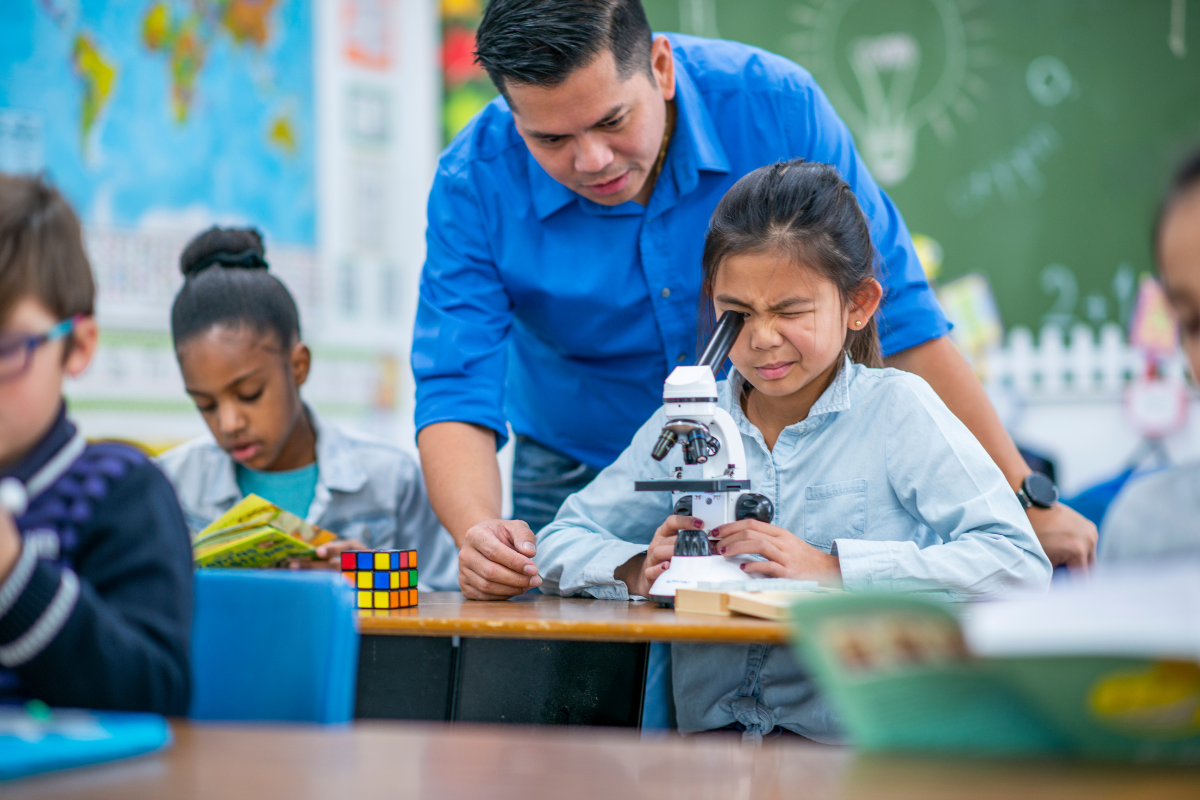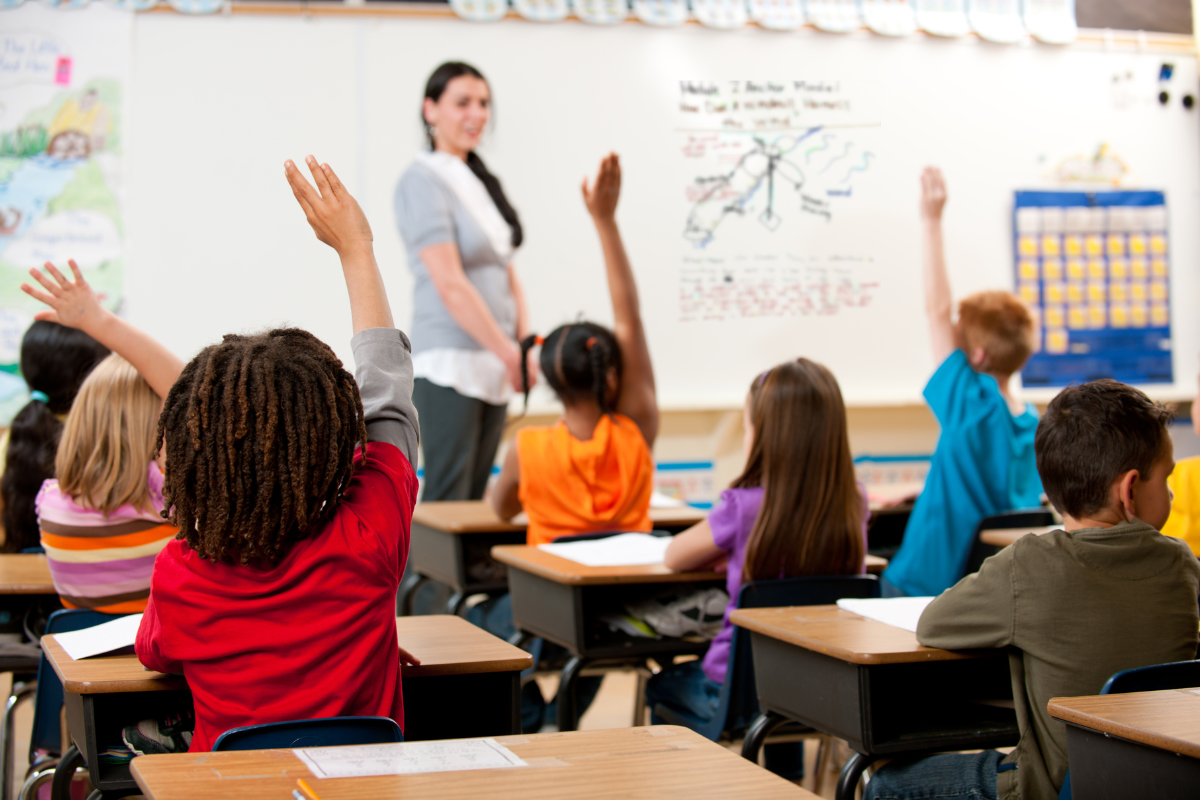Posted in: Aha! Blog > PhD Science > Student Engagement Getting Started - PhD Science > How Hands-On Activities Spark Student Curiosity in Science
As an educator, you’re keenly aware of how curious and observant children are. They strive to understand and make sense of the world around them. How can you provide them with the opportunity to do just that within science instruction? How can your classroom become a place where student curiosity is nurtured and developed?
Too often in science instruction, students are left reading about scientific discoveries of the past and memorizing scientific facts instead of experiencing science. PhD Science® was crafted to change that, leveraging students’ curiosity to build a deep and lasting understanding of science. With PhD Science, you’ll quickly notice a shift in student engagement as students make strong connections through real-world phenomena and problems.
 Redefining Hands-On
Redefining Hands-On
PhD Science students don't just read about science but also practice science, building deep and lasting comprehension of scientific concepts through hands-on investigations. Often the term investigations renders images of mixing liquids in a beaker or something along those lines. It might even trigger visuals of “experiments,” including those that take a student step by step through the procedures.
Investigations and experiments are only a small part of all that can be considered “hands-on.” Hands-on can include all the ways students interact with content. This can be through investigations or demonstrations, observations of images and fine art or graphs, videos, and other primary sources plus additional activities and the reading and analysis of trade books. By widening the scope of hands-on, your students receive more opportunity to engage in the science and engineering practices.
 PhD Science incorporates trade books in each module. One of those core texts is Beastly Biomes by Carly Allen-Fletcher, which is a book that Level 2 students explore as they study biomes in Module 4. Despite Biomes being the module title, the term biome is not immediately explored or even introduced. Instead, students explore and participate in various activities and are introduced to terms only after having an opportunity to engage in the content and attach rich meaning to the words. One such activity in Level 2 Module 4 has students analyze data to describe yearly temperature and precipitation patterns in a red panda habitat, which is a temperate forest. Through this activity, various terms are introduced including habitat, but temperate forest and biome are explored and introduced later in the module.
PhD Science incorporates trade books in each module. One of those core texts is Beastly Biomes by Carly Allen-Fletcher, which is a book that Level 2 students explore as they study biomes in Module 4. Despite Biomes being the module title, the term biome is not immediately explored or even introduced. Instead, students explore and participate in various activities and are introduced to terms only after having an opportunity to engage in the content and attach rich meaning to the words. One such activity in Level 2 Module 4 has students analyze data to describe yearly temperature and precipitation patterns in a red panda habitat, which is a temperate forest. Through this activity, various terms are introduced including habitat, but temperate forest and biome are explored and introduced later in the module.
Shifting from Memorization to Deep Understanding with Activities
As was mentioned in the example above, PhD Science students move beyond simply memorizing the definitions of science terms to engaging in an ABC > CBT (Activity Before Concept > Concept Before Terminology) approach. This ABC > CBT approach aids students in their conceptual development. Students gain a basic understanding before a concept is presented and investigate the concept more until formal names or terms are introduced.
An activity from Level 3 Module 4 involves students investigating sliding motion by releasing a wooden block down a ramp. This is one of six motion stations that students explore. As they move to the next lesson, students apply their learned knowledge in a new context, applying terms such as direction, speed, and rest.
PhD Science introduces students to new concepts through engaging hands-on activities that allow them first to observe and wonder and then to investigate and deeply understand phenomena.
>> WATCH EXPERIENTIAL LEARNING IN ACTION
Connecting Science to the Real World
Students are given opportunities to design and conduct investigations and apply scientific processes in new contexts through Science Challenges or Engineering Challenges. With a Science or Engineering Challenge in each module, students can continue to build and connect knowledge of the world around them.
Science Challenges allow students to work with peers to answer questions or solve problems and present their findings to the class. In Level 2 Module 4, students explore the varied environments of the Mount Everest region. Throughout the module, students analyze biomes by looking for patterns in weather data and considering the variety of life in different areas around the world. In the Science Challenge, students apply what they have learned to their local environment as they measure and describe the biodiversity of their schoolyard.
In Engineering Challenges, students develop a solution to a real-world problem. In the Level 3 Module 4 Engineering Challenge, students work to answer the question, “How can we use magnets to design a solution to help astronauts in space?” Students engage in the engineering design process while considering the criteria for success and the limitations imposed by constraints, such as the materials and resources available and time allocated. Engineering Challenges hold all students to the same expectations while promoting student creativity and choice.
![]()



The Engineering Design Process grows in complexity from Level K to Level 5.
What to Expect with Hands-On Investigations
Hands-on investigations provide students with shared opportunities to collect evidence, develop and evaluate their ideas, and build scientific explanations. Hands-on investigations are supported by materials kits with cost-conscious consumable and nonconsumable supplies. Kits are available by module or level and designed for 24 students with up to six investigation groups per classroom. PhD Science provides hands-on experiences that enable students to engage in science activities and connect content to the real world.
PhD Science is joyfully rigorous with students excited about digging in. We don’t sacrifice the content or requirements for the sake of keeping students engaged. The rigor itself promotes that engagement and interest in making sense of the world.
Submit the Form to Print

PhD Science
PhD Science® is a hands-on K–5 science program that sparks wonder as students build enduring knowledge of how the scientific world works. PhD Science students think and act like real scientists as they ask questions, gather evidence, develop models, and construct explanations while investigating authentic phenomena. Learn more at greatminds.org/science.










